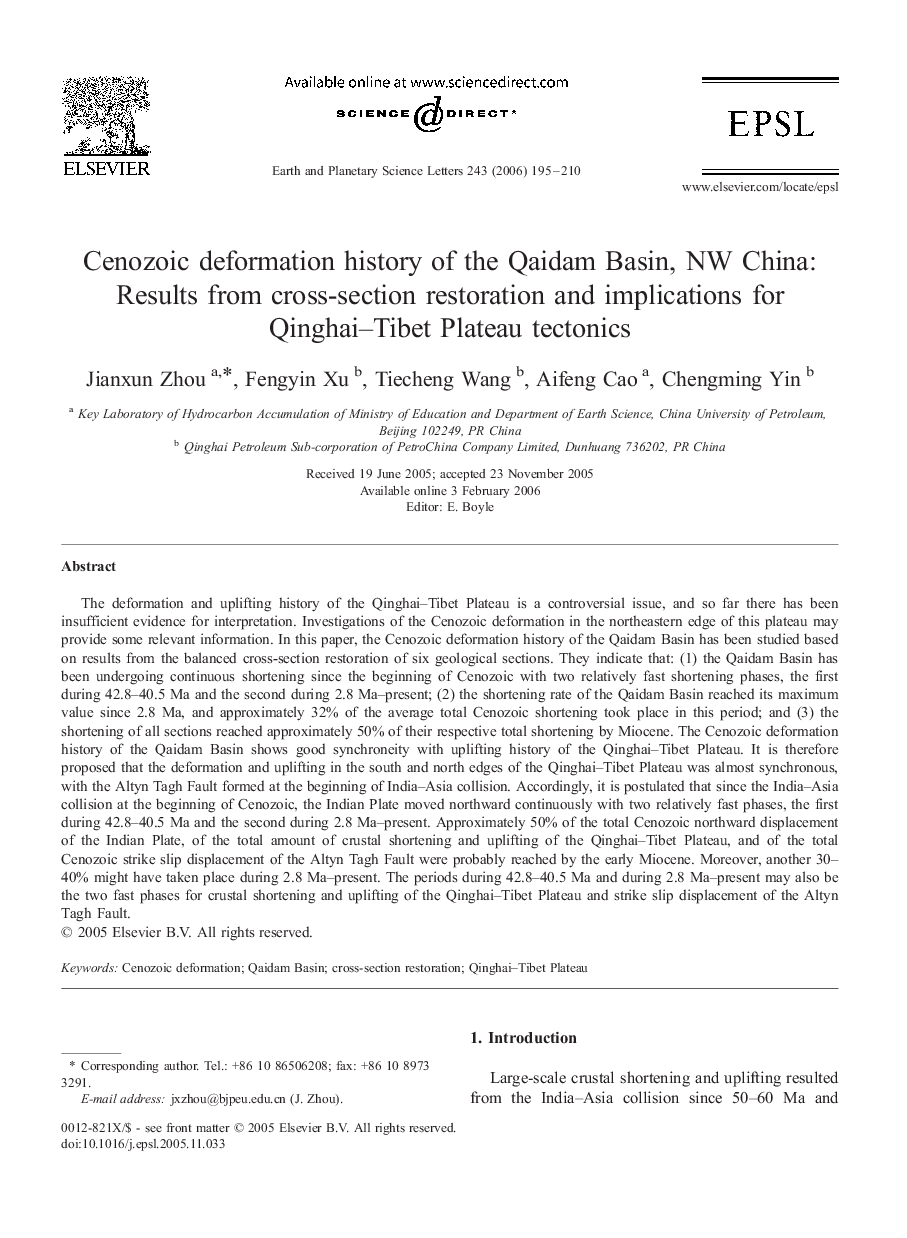| Article ID | Journal | Published Year | Pages | File Type |
|---|---|---|---|---|
| 4681169 | Earth and Planetary Science Letters | 2006 | 16 Pages |
The deformation and uplifting history of the Qinghai–Tibet Plateau is a controversial issue, and so far there has been insufficient evidence for interpretation. Investigations of the Cenozoic deformation in the northeastern edge of this plateau may provide some relevant information. In this paper, the Cenozoic deformation history of the Qaidam Basin has been studied based on results from the balanced cross-section restoration of six geological sections. They indicate that: (1) the Qaidam Basin has been undergoing continuous shortening since the beginning of Cenozoic with two relatively fast shortening phases, the first during 42.8–40.5 Ma and the second during 2.8 Ma–present; (2) the shortening rate of the Qaidam Basin reached its maximum value since 2.8 Ma, and approximately 32% of the average total Cenozoic shortening took place in this period; and (3) the shortening of all sections reached approximately 50% of their respective total shortening by Miocene. The Cenozoic deformation history of the Qaidam Basin shows good synchroneity with uplifting history of the Qinghai–Tibet Plateau. It is therefore proposed that the deformation and uplifting in the south and north edges of the Qinghai–Tibet Plateau was almost synchronous, with the Altyn Tagh Fault formed at the beginning of India–Asia collision. Accordingly, it is postulated that since the India–Asia collision at the beginning of Cenozoic, the Indian Plate moved northward continuously with two relatively fast phases, the first during 42.8–40.5 Ma and the second during 2.8 Ma–present. Approximately 50% of the total Cenozoic northward displacement of the Indian Plate, of the total amount of crustal shortening and uplifting of the Qinghai–Tibet Plateau, and of the total Cenozoic strike slip displacement of the Altyn Tagh Fault were probably reached by the early Miocene. Moreover, another 30–40% might have taken place during 2.8 Ma–present. The periods during 42.8–40.5 Ma and during 2.8 Ma–present may also be the two fast phases for crustal shortening and uplifting of the Qinghai–Tibet Plateau and strike slip displacement of the Altyn Tagh Fault.
